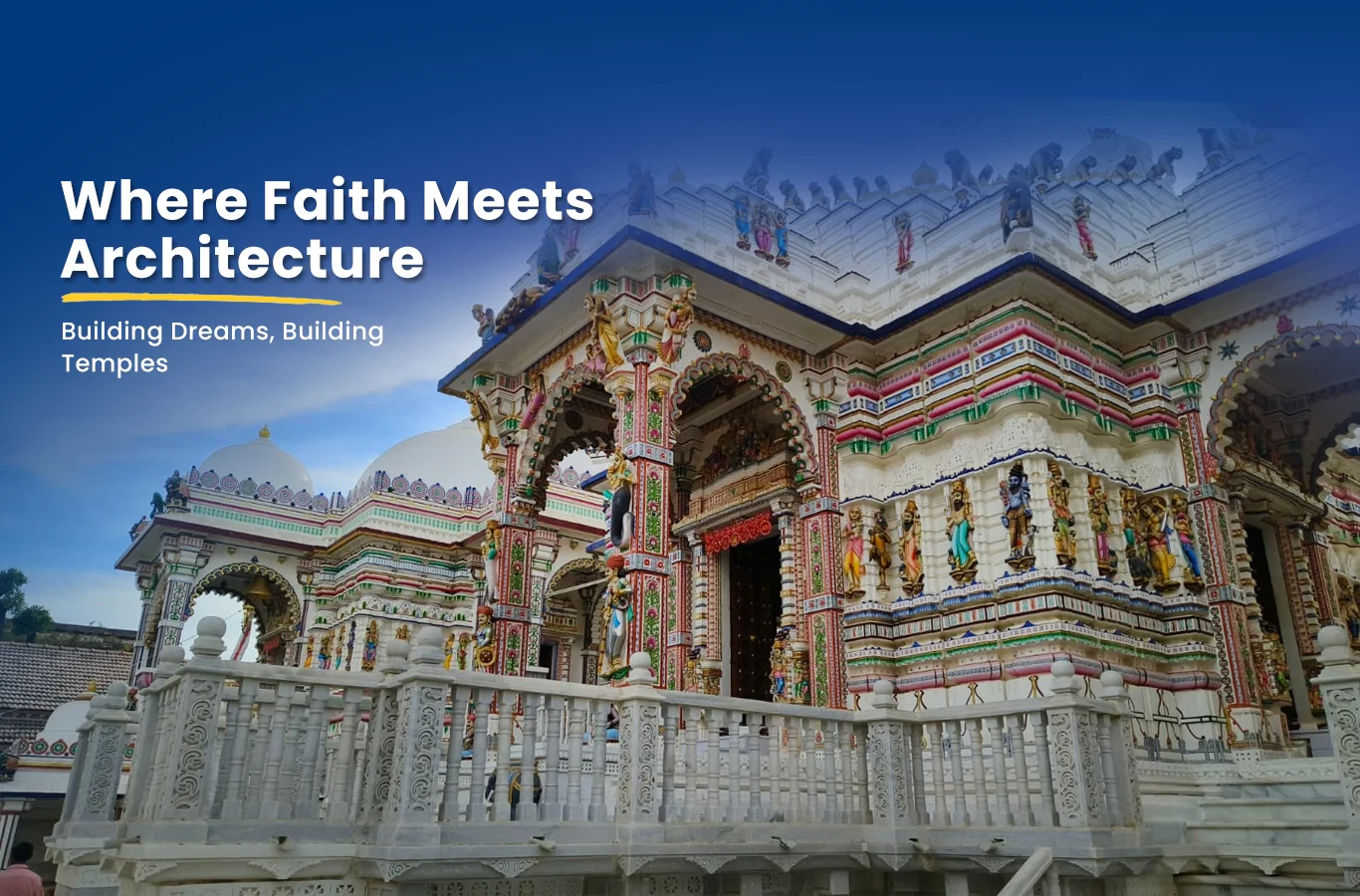Jain temples are not only symbols of spiritual devotion but also remarkable examples of sustainable architecture. Built with eco-conscious practices, these temples offer valuable lessons for modern sustainable design. This article explores how Jain temples embody sustainability, highlighting the role of Temple Architects in India, the craftsmanship of the Jain Temple Sompura community, and the contributions of Temple Construction Services in Gujarat in creating environmentally conscious structures.
The Sustainability Philosophy of Jainism
Jainism and Environmental Stewardship
Jain philosophy emphasizes non-violence (ahimsa) and respect for all forms of life. This ethos extends to their temples, which are designed to harmonize with nature and minimize environmental impact.
Role of Temple Architect in India
Temple Architects in India incorporate sustainable practices rooted in ancient wisdom, creating structures that are not only spiritually significant but also environmentally friendly.
Features of Eco-Friendly Jain Temples
1. Sustainable Materials
Use of Natural Stone
Jain temples are predominantly constructed with durable, natural materials like marble, granite, and sandstone. These materials:
- Require minimal maintenance.
- Are sourced locally to reduce the carbon footprint.
Contributions of Jain Temple Sompura Architects
The Jain Temple Sompura artisans are renowned for their skill in selecting and carving stone, ensuring that the materials enhance both the beauty and longevity of the temple.
2. Energy Efficiency
Natural Ventilation and Lighting
Jain temples are designed to maximize natural light and airflow through:
- Intricate jaali work (perforated stone screens).
- Strategically placed windows and open courtyards.
Role of Temple Construction Services in Gujarat
Modern Temple Construction Services in Gujarat incorporate traditional techniques with advanced technology to optimize energy efficiency in both heritage restorations and new projects.
3. Water Conservation
Rainwater Harvesting Systems
Many Jain temples include ancient rainwater harvesting systems, channeling rainwater into underground tanks or ponds for reuse.
Temple Design for Water Management
The stepped wells and tanks often found in Jain temples demonstrate sophisticated water management systems that are both functional and aesthetically pleasing.
4. Minimal Environmental Impact
Preservation of Natural Landscapes
Jain temples are often built on hilltops or in forests, blending seamlessly with their surroundings to minimize disruption to the local ecosystem.
Temple Architect in India and Site Selection
The Temple Architects in India carefully choose sites that align with Jain principles of harmony with nature, ensuring minimal ecological disturbance during construction.
Iconic Examples of Sustainable Jain Temples
Dilwara Temples, Mount Abu
- Sustainable Practices: These temples were constructed using locally sourced white marble, reducing transportation-related emissions.
- Energy Efficiency: The intricate carvings and open courtyards allow natural light to illuminate the interiors.
Ranakpur Jain Temple, Rajasthan
- Eco-Friendly Materials: Built entirely of locally sourced white marble, it stands as a testament to sustainability.
- Natural Cooling: The temple’s architecture ensures that it remains cool even in the scorching Rajasthan summers.
Shatrunjaya Temples, Palitana, Gujarat
- Water Management: The temples feature rainwater harvesting systems and tanks for efficient water use.
- Minimal Impact: Located atop a hill, these temples blend perfectly with the natural environment.
Contributions of Temple Construction Services in Gujarat
Expertise in Eco-Friendly Designs
Temple Construction Services in Gujarat have played a significant role in promoting sustainable practices in temple building, such as:
- Using renewable energy sources like solar panels.
- Incorporating waste management systems during construction.
Restoration of Heritage Temples
Gujarat’s construction services focus on preserving the eco-friendly features of ancient temples while restoring their structural integrity, ensuring their legacy endures.
Lessons from Jain Temples for Modern Sustainable Architecture
1. Integration with Nature
Modern architects can draw inspiration from Jain temples’ seamless integration with natural landscapes, ensuring minimal disruption to ecosystems.
2. Long-Lasting Materials
The use of durable materials like stone ensures that structures can last for centuries, reducing the need for frequent renovations and resource consumption.
3. Passive Cooling Techniques
Adopting natural ventilation and lighting systems, as seen in Jain temples, can significantly reduce energy consumption in modern buildings.
The Role of Jain Temple Sompura Architects
Reviving Ancient Techniques
The Jain Temple Sompura community continues to uphold ancient eco-friendly construction practices, combining them with modern sustainability standards.
Training the Next Generation
By mentoring young artisans, the Sompura architects ensure the continued use of sustainable practices in temple construction.
Challenges and Innovations in Sustainable Temple Construction
Balancing Tradition and Modern Needs
Modern temple construction must meet contemporary requirements while preserving traditional eco-friendly features.
Innovations by Temple Construction Service in Gujarat
- Sustainable Materials: Introducing eco-friendly alternatives to traditional materials.
- Modern Technology: Using advanced tools for precision while maintaining traditional aesthetics.
Conclusion
Jain temples are timeless examples of how architecture can harmonize with nature while fulfilling spiritual and cultural needs. From their use of natural materials to sophisticated energy and water management systems, these temples exemplify sustainable practices that modern architecture can emulate.
The contributions of Temple Architect in India , the craftsmanship of Jain Temple Sompura artisans, and the innovations by Temple Construction Services in Gujarat ensure that these eco-friendly marvels continue to inspire future generations. By embracing the lessons of Jain temple architecture, we can pave the way for a more sustainable and harmonious built environment.

